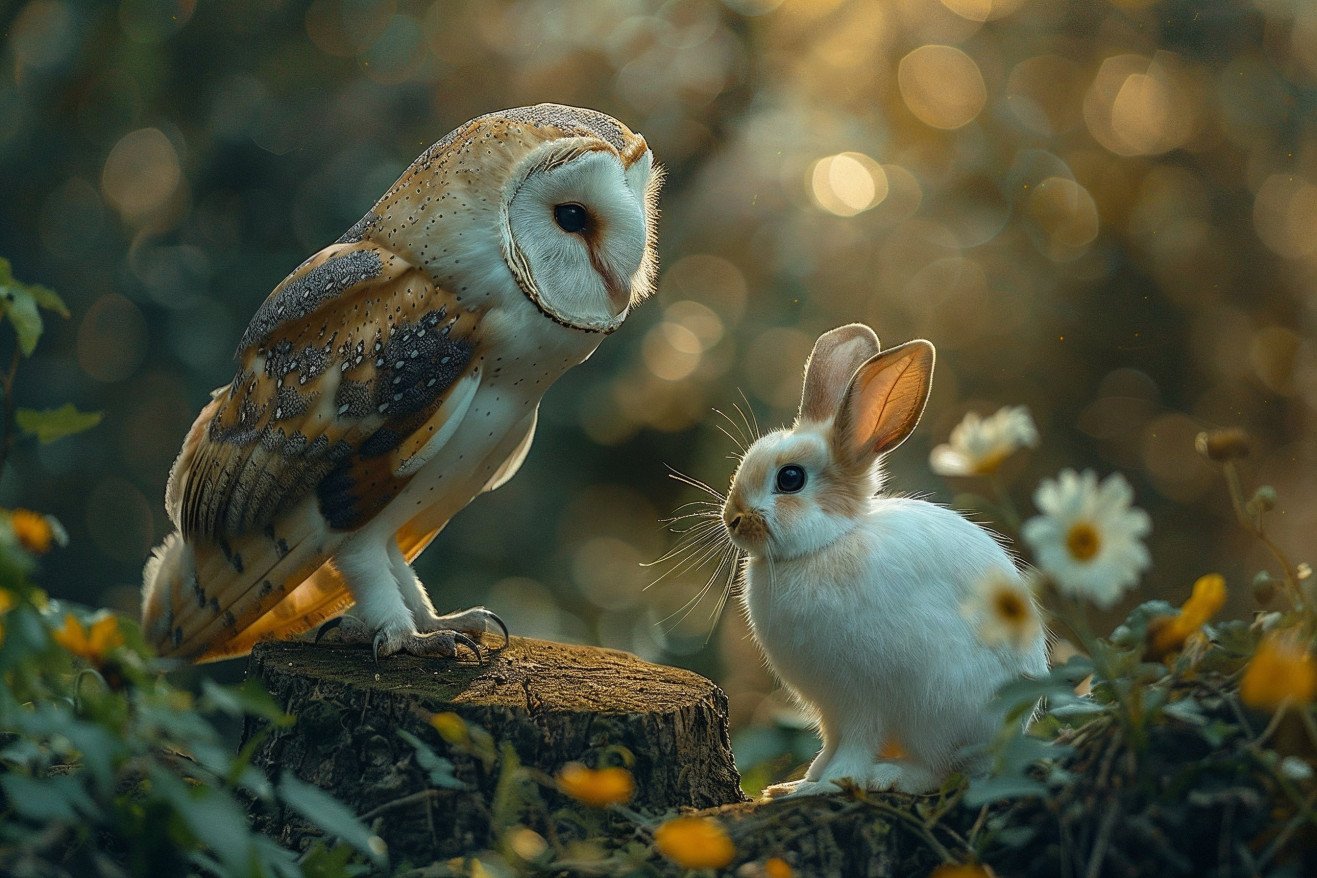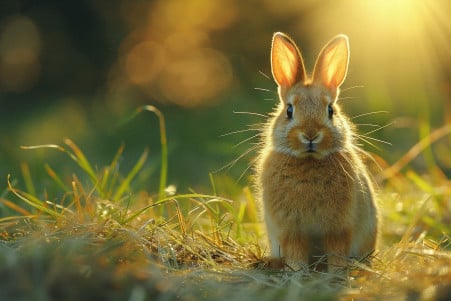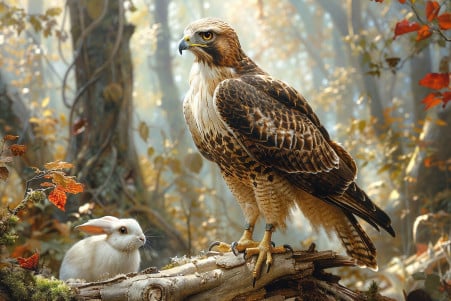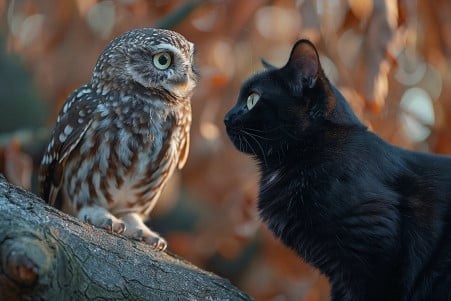What Do Owls Eat? A Look at Owl Predation
2 March 2024 • Updated 1 March 2024

Known for their silent flight and nocturnal lifestyle, owls are highly effective predators, but do owls eat rabbits? The answer is yes, owls eat rabbits. However, the owl’s diet is diverse and includes many different types of prey.
Rabbits are a popular choice for owls because of their size and the amount of energy they provide. In fact, larger species of owls, such as the great horned owl, are even known to take down adult rabbits.
In this investigation of the predatory relationship between owls and rabbits, we will examine a wide range of ornithological and ecological research. This will include studies of behavior, diet, and an analysis of the hunting adaptations of owls.
By looking at these studies, we will gain a well-rounded understanding of how owls hunt, their place in the food chain, and the ways in which rabbits have adapted to survive. This will give us a complete picture of the complex interplay between these animals in their natural environments.
Do owls eat rabbits?
The Predatory Mastery of Owls: Silent Flight and Deadly Talons
Owls are the ultimate silent hunters, and their many adaptations have made them especially effective at hunting rabbits. As noted by Pets on Mom.com, owls have the ability to fly silently, and their special feathers enable them to muffle the sound of their wingbeats, which is essential for sneaking up on their prey, such as rabbits.
Silent flight, when combined with their excellent night vision and highly acute hearing, enables owls to detect and follow even the smallest of movements in the dark.
Owls are also equipped with powerful talons and beaks, which are their primary tools for hunting. As explained by the Owl Research Institute, owls use their talons and beaks to capture and kill their prey, and they are capable of delivering fatal blows that ensure a quick and effective hunt.
For example, the “perch and pounce” hunting strategy, in which an owl perches in a high location before diving down on its prey, is especially effective when hunting rabbits, who may not notice the owl until it’s too late.
In addition, owls use their feathers to blend in with their surroundings, which enables them to remain hidden from their prey, such as rabbits, until the last possible moment. This combination of silent flight, physical strength, and hunting strategies demonstrates the owl’s hunting abilities and their status as the top nocturnal predator in a variety of environments.
Why Owls Eat Rabbits
Rabbits are an important part of the owl diet. According to Birdfact, rabbits are a preferred prey for owls of all sizes, from the smallest to the largest great horned owl.
In general, owls eat a variety of prey that ranges from small rodents to larger mammals and other birds. Rabbits are a popular choice because they can be found in many different environments, they are nutritious, and they are the right size for the larger species of owls.
Birdfact notes that the great horned owl is known for its ability to carry prey that is up to four times its weight, including the largest rabbits and hares. The fact that owls are willing to hunt larger prey demonstrates how important rabbits are to their diet. This is especially true for the great horned owl, which is able to sustain itself by hunting rabbits.
While not all species of owls can hunt rabbits because they are too small, those that can rely on them for food.
The fact that rabbits are part of the owl diet is an important example of how ecosystems work. This is because it demonstrates the relationship between predators and prey, which is important for the survival of the animals involved and the health of the ecosystems they live in.
Predation and Equilibrium: How Owls Impact Rabbit Populations
The relationship between owl predation and rabbits is a fine-tuned dance in the ecosystem. A clear example of how changes in the environment can impact this equilibrium is the rabbit haemorrhagic disease (RHD) outbreak in Spain.
A 2023 article by Martinez et al. in the Journal of Ornithology explains that after an RHD epidemic wiped out rabbit populations in Spain, eagle owls continued to hunt the few rabbits that were left. This shows the specialization of their hunting techniques and their inability to adapt to a sudden lack of prey.
A 2022 article by Gomez et al. in Diversity shows that the predation of eagle owls has an impact on the behavior and habitat selection of other species in the ecosystem. The article explains that stone martens avoid areas with high owl and rabbit populations, showing the complex nature of predator-prey relationships.
Moreover, the European Journal of Wildlife Research explains that while eagle owls have a diverse diet that includes hares and other birds, rabbits are still a major part of their diet, especially in areas where they are abundant. As a result, changes in the availability of prey, whether due to disease or other environmental changes, can have far-reaching impacts on the food web.
Looking deeper into the details of this ecological web shows that both predators and prey are constantly evolving to survive. The survival mechanisms of rabbits, which are influenced by the pressure of predation from owls, are an example of the evolutionary arms race that leads to the diversity and adaptability of species in nature.
The Art of Evasion: How Rabbits Outsmart Owls
In the wild, rabbits are constantly playing the game of life, especially when owls are hunting. To avoid becoming a meal, rabbits have developed a number of defense mechanisms, according to Pets on Mom. Their senses are the first line of defense; rabbits have excellent hearing and a 360-degree field of vision, which means that they can often sense danger before it even appears.
A rabbit may use the freeze response to blend in with its surroundings, which can make it nearly invisible to an owl that is searching for it.
Rabbits also use their environment to their advantage—by running into thickets or holes, they can lose a predator that is chasing them. They also have the ability to run quickly and turn on a dime, which allows them to escape a predator at the last minute.
In addition, the fact that rabbits reproduce so quickly is nature’s way of ensuring that the loss of some rabbits to predation doesn’t have a huge impact on the population as a whole.
The natural survival skills of rabbits are evidence of the evolutionary competition between the defense mechanisms of rabbits and the hunting skills of owls. It’s a delicate balance that demonstrates just how much resilience it takes for rabbits to continue their lineage in the presence of such a formidable aerial predator.
Rabbit Reproduction: A Natural Balancing Act
Rabbits are well-known for their prolific breeding. In fact, one unspayed female rabbit and her offspring could, in theory, produce billions of descendants in just seven years, according to Dana Krempels, Ph.D. While this impressive rate of reproduction helps rabbits avoid predation and other environmental challenges, it also enables rabbit populations to maintain and recover from major population losses.
However, the success of rabbits’ reproductive strategy isn’t just about the number of offspring they produce. Instead, it’s closely tied to their role as prey in the ecosystem, with predators like owls playing a key part in this relationship.
This means that the reproductive success of rabbits is tied to the reproductive success of owls. The reproductive patterns of owls are influenced by the seasons and environmental conditions, which in turn influences the availability of rabbits as prey.
Meanwhile, rabbits can reach sexual maturity quickly and can reproduce again soon after giving birth, so that one female rabbit can produce as many as 60 weaned offspring a year through what’s known as “intensive breeding,” according to the Michigan State University Extension.
The reproductive dynamics of rabbits are essential to the balance of the ecosystems they inhabit. While their high rate of reproduction helps ensure that they can thrive and provide food for predators like owls, it’s also impacted by predation, the environment, and disease.
This means that the relationship between reproductive success and predation pressure is essential to the survival of rabbits and the ecosystems they inhabit, and it demonstrates the complexity of the natural world.
The Owl–Rabbit Dynamic: A Fragile Equilibrium
Our exploration of the night world of owls and their prey has led to a detailed understanding of the relationship between these two animals. We have seen that the owls’ silent flight, keen senses, and powerful hunting adaptations make them highly efficient predators of rabbits.
Rabbits, meanwhile, are more than just food for owls; they are a critical source of nutrition for the larger owl species, which in turn affects their hunting behavior and range.
The ecological repercussions of this relationship go beyond the direct predator-prey interaction, as owl predation has a direct effect on rabbit populations. This fragile equilibrium has a profound impact on ecosystems, with owls acting as a keystone species that helps regulate rabbit populations and, in turn, the biodiversity and health of the ecosystems they inhabit.
From an evolutionary perspective, we are witnessing an evolutionary arms race, with the survival skills of rabbits evolving in response to the hunting skills of owls. This equilibrium underscores the importance of conservation efforts to ensure the continued survival of both species and their contributions to their ecosystems.
As we wrap up this investigation, it’s important to reiterate the importance of ongoing research, which is essential to the continued conservation of these animals and the complex ecosystems they are part of.


